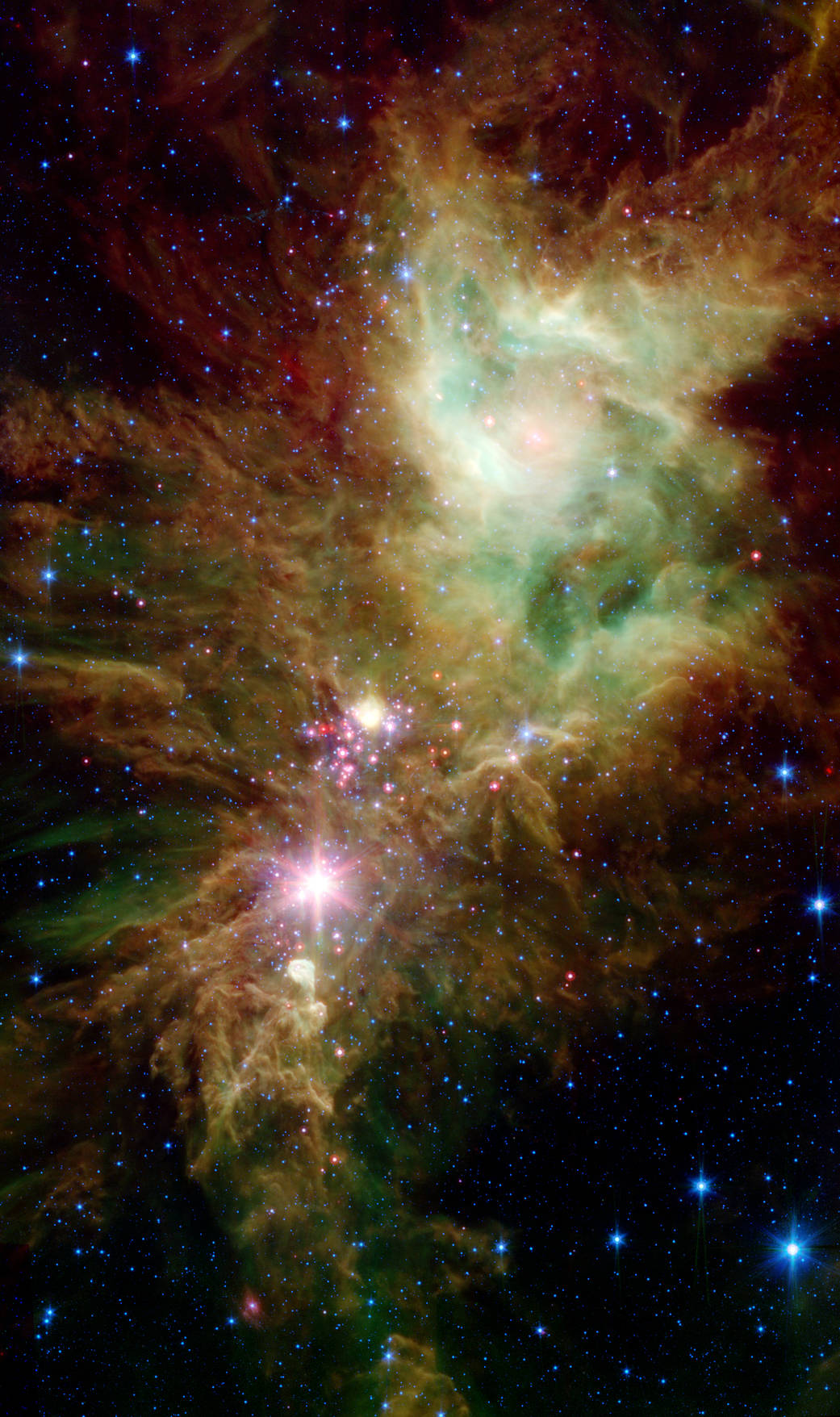Newborn stars, hidden behind thick dust, are revealed in this image of a section of the so-called Christmas Tree Cluster from NASA’s Spitzer Space Telescope. The newly revealed infant stars appear as pink and red specks toward the center and appear to have formed in regularly spaced intervals along linear structures in a configuration that resembles the spokes of a wheel or the pattern of a snowflake. Hence, astronomers have nicknamed this the “Snowflake Cluster.”
Star-forming clouds like this one are dynamic and evolving structures. Since the stars trace the straight line pattern of spokes of a wheel, scientists believe that these are newborn stars, or “protostars.” At a mere 100,000 years old, these infant structures have yet to “crawl” away from their location of birth. Over time, the natural drifting motions of each star will break this order, and the snowflake design will be no more.
While most of the visible-light stars that give the Christmas Tree Cluster its name and triangular shape do not shine brightly in Spitzer’s infrared eyes, all of the stars forming from this dusty cloud are considered part of the cluster.
Like a dusty cosmic finger pointing up to the newborn clusters, Spitzer also illuminates the optically dark and dense Cone Nebula, the tip of which can be seen towards the bottom left corner of the image.
Image Credit: NASA/JPL-Caltech/P.S. Teixeira (Center for Astrophysics)
NASA的斯皮策太空望远镜太空望远镜拍摄的所谓圣诞树簇的这一部分图像中,隐藏着厚厚的尘埃背后的新生恒星。新发现的新生恒星向中心呈粉红色和红色斑点状,并似乎以规则的间隔沿线性结构形成,其结构类似于轮辐或雪花图案。因此,天文学家将其命名为“雪花星团”。
像这样的恒星云是不断变化的动态结构。由于恒星遵循轮辐的直线模式,因此科学家认为这些恒星是新生恒星或“原恒星”。这些只有10万年历史的婴儿结构还没有从它们出生的地方“爬”出来。随着时间的流逝,每颗恒星的自然漂移运动都会破坏该顺序,而雪花的布局将不复存在。
在斯皮策的红外眼中,虽然大多数赋予圣诞树簇名称和三角形形状的可见光恒星都不会明亮地发光,但所有由这种尘埃云形成的恒星都被认为是该簇的一部分。
像尘土飞扬的宇宙手指指向新生儿的星团一样,斯皮策还照亮了光学上黑暗而浓密的锥状星云,可以从图像的左下角看到其尖端。
影像来源:NASA/JPL-Caltech/P.S. Teixeira (Center for Astrophysics)







